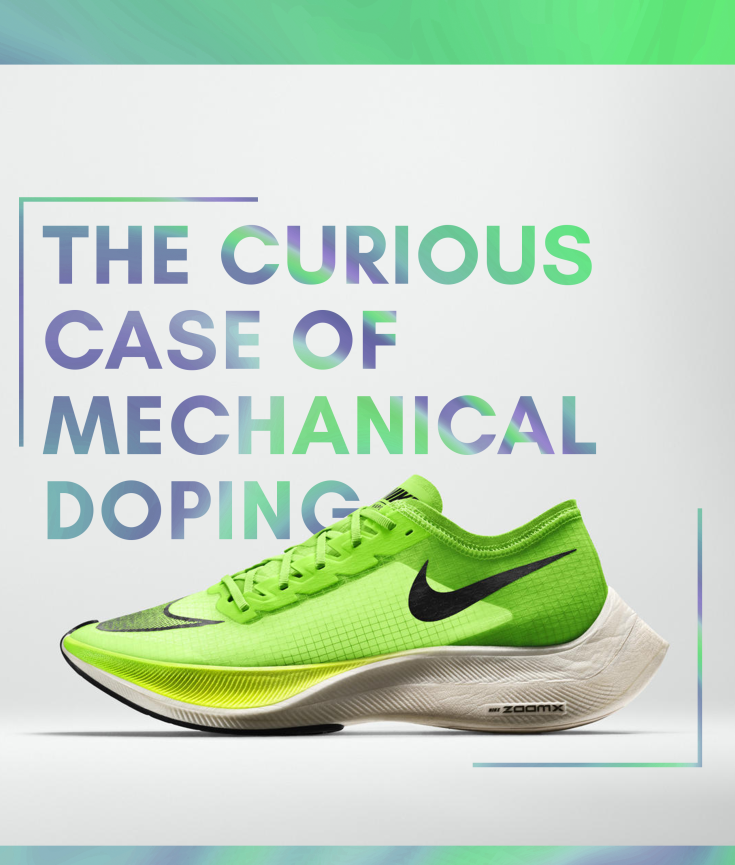The issue of performance doping has become an issue in the long-distance running, due to the introduction of Nike’s revolutionary sneaker, the Nike Vaporfly. The shoes have been criticised due to its innovative design which Nike claims allows the wearer to be 4% more efficient than Nike’s previous fastest marathon shoes. The claims made by Nike is backed up in terms of records as according to the WSJ, 5 of the men’s all-time fastest marathon times were all made wearing the Nike Vaporfly models. This sudden rise in success of the Vapourfly begs the question, is this a form of mechanical doping?
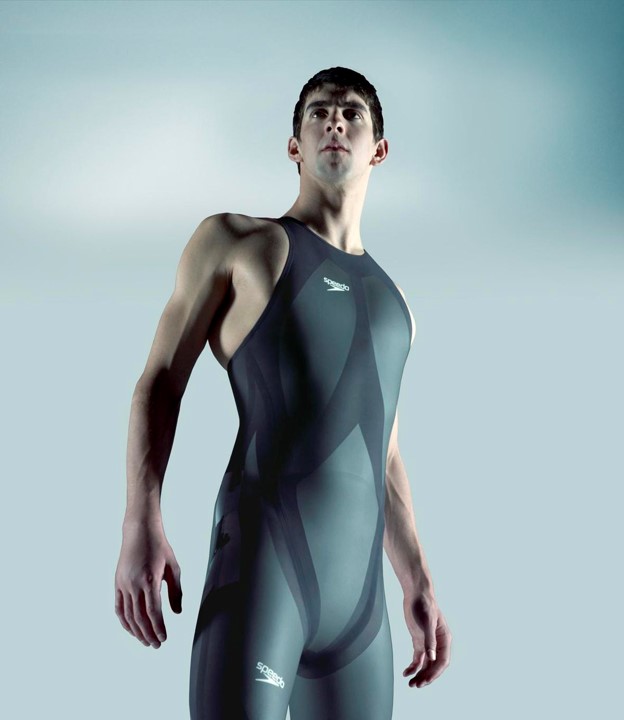
Image via Speedo
To answer the question, similar cases in other sports can be investigated. For the case of swimming, the swimmers were banned from using the full body suits which were used to break 200 world records in 2010. It was due to the fact that the swimming suits decreased fatigue and gave the swimmers more speed. So, it gave the swimmers who were using the full body suits an advantage over the swimmers wearing old suits which led to its eventual ban.
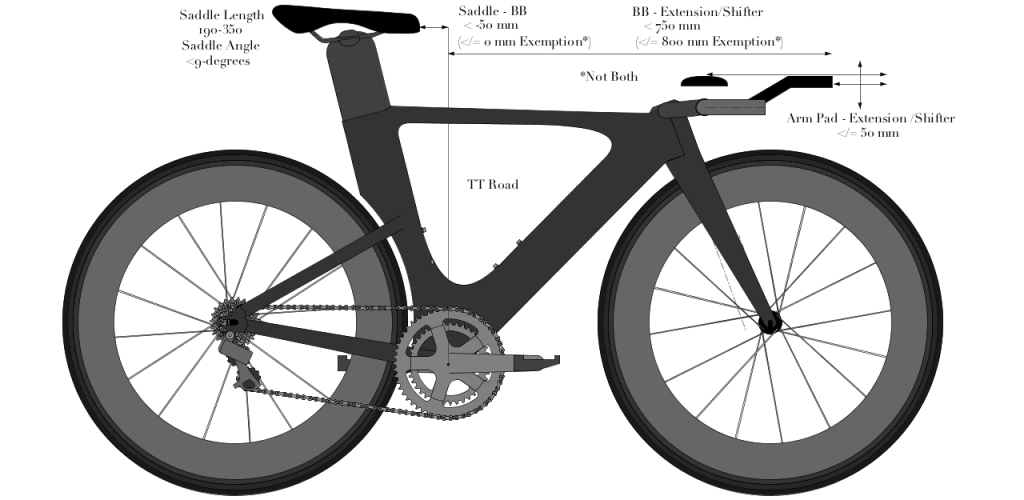
Image via Bicycle Fit Guru
For competitive cycling, complex regulations are set by the UCI on how bicycles have to be built. The regulations touch on the weight of the bicycle itself to the number of spokes a wheel should have. This allows all the cyclists that are competing in the race to have a level playing field through the use of similar equipment.
As shown in both cases, regulations and bans on certain equipment used in the sports were put in place to give a level playing field for all the athletes entering the competition. The goal of the long-distance running should be questioned as if it’s the competition of the highest performance or competition of human vs human. If the the World Athletics is looking for the competition of human vs human, a regulation should be set place to give a fair ground for every athlete that is entering the competition. So far in athletics it has been unfair as the shoes can be worn only by athletes endorsed by Nike, while other athletes who are endorsed by other brands aren’t given that extra 4%.
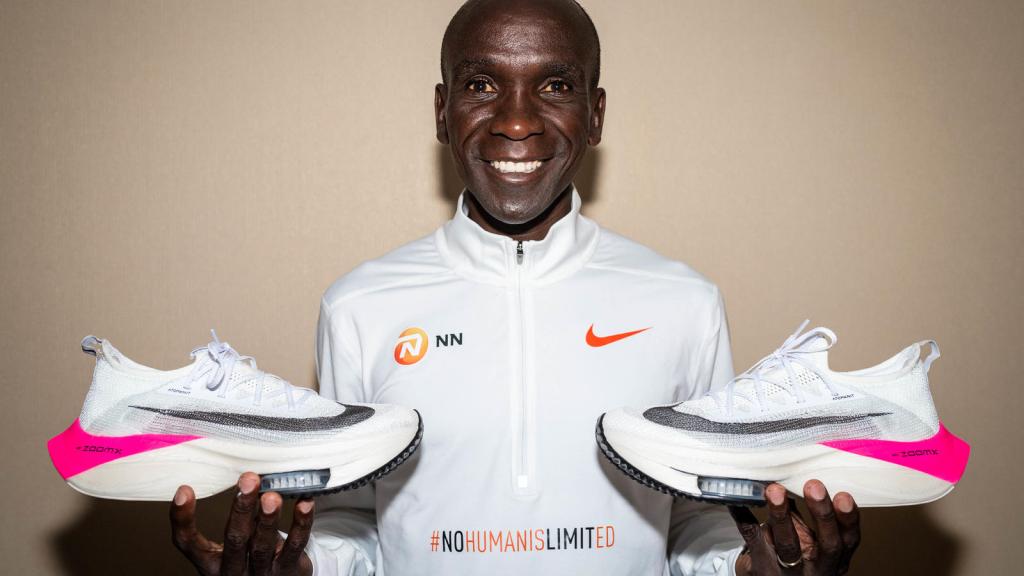
Image via Nike
The World Athletics announced new regulations on shoes that are used in long distance running. For new technology that is introduced, the shoes have to be available in the market for 4 months to be used in competion. And the sole of the shoes should not be thicker than 40mm and there has been a ban on shoes that contain more than one “rigid embedded plate or blade”. There is still mixed reactions to the rules as some believe the rules have to be tighter. So far, there seems to be no further signs of tightening the regulations.
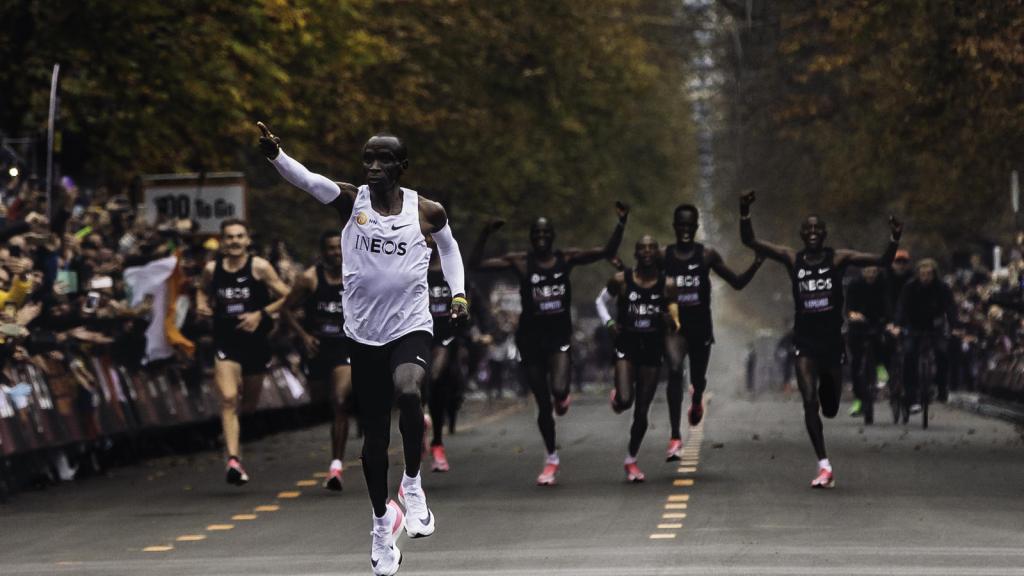
Image via Nike
There is certain critisim of other companies not innovating enough in running shoes which led to the eventual technological difference between Nike shoes and other brands. However, as stated above, long-distance running is not a showcase of innovation, it is the showcase of human performance. The competition should not be focused on the equipment which would otherwise distort the goal of the event. It is always important to innovate and move forward in sports however, innovation should only go as far to be able to support the athletes. It should always be the athlete winning the competition not the shoes.
